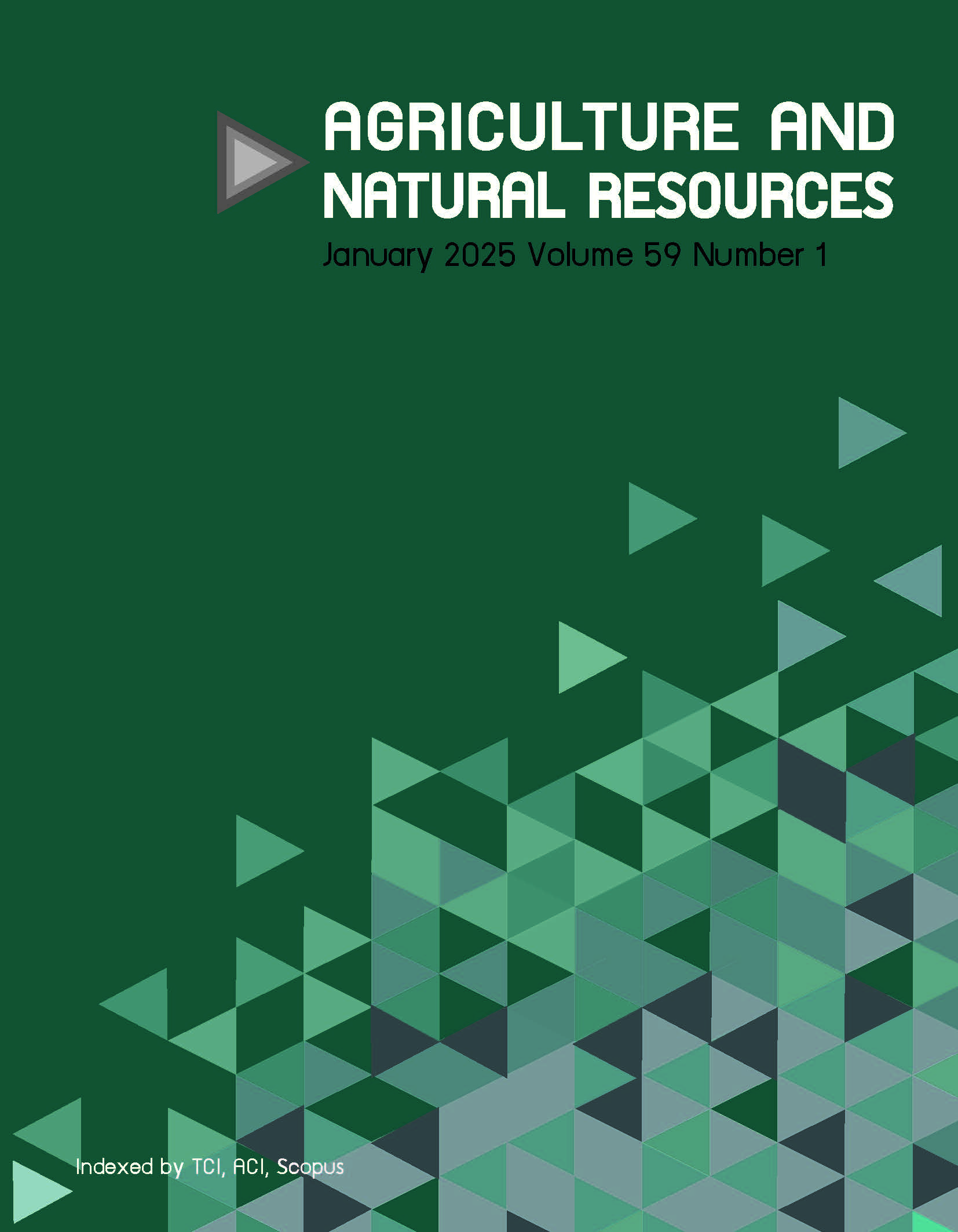Impacts of α-tocopherol (vitamin E) and L-ascorbic acid (vitamin C) on reproductive performance in female yellow mystus (Hemibagrus spilopterus)
Keywords:
Estrogen, Fecundity, Growth, Progesterone, Synergistic effectAbstract
Importance of the work: The success of breeding in fish is influenced by egg quality, which can be enhanced through vitamin supplementation in the diet.
Objectives: To evaluate the effects of vitamins C and E, both individually and in combination, on the growth, reproductive performance and sex hormone levels in female yellow mystus.
Materials and Methods: Female yellow mystus aged 1 yr were fed a commercial diet with 32% protein, supplemented with: 1) no vitamins (the control); 2) vitamin C at 1,000 mg/kg; 3) vitamin E at 500 mg/kg; or 4) a combination of 1,000 mg/kg vitamin C + 500 mg/kg vitamin E. Data were collected on growth, ovary weight, gonadosomatic index (GSI), fecundity and hormone levels after 30 d and 60 d of treatment, while the fertilization rate and the hatching rate were evaluated only at 60 d.
Results: There were synergistic effects from adding vitamin C and E. Fish fed the combined vitamin supplementation showed improved GSI, ovary weight, estrogen and progesterone levels. Vitamin C supplementation alone (at 30 d) also increased fecundity. By day 60, all vitamin-supplemented groups showed improved fecundity, fertilization and hatching rates.
Main finding: The combination of vitamin C and vitamin E significantly improved reproductive parameters in yellow mystus, consisting of fecundity, fertilization rates, hatching rates and sex hormones, offering potential for enhanced fry production.
Downloads
Published
How to Cite
Issue
Section
License
Copyright (c) 2025 online 2452-316X print 2468-1458/Copyright © 2025. This is an open access article under the CC BY-NC-ND license (http://creativecommons.org/licenses/by-nc-nd/4.0/), production and hosting by Kasetsart University Research and Development Institute on behalf of Kasetsart University.online 2452-316X print 2468-1458/Copyright © 2022. This is an open access article under the CC BY-NC-ND license (http://creativecommons.org/licenses/by-nc-nd/4.0/),
production and hosting by Kasetsart University of Research and Development Institute on behalf of Kasetsart University.







